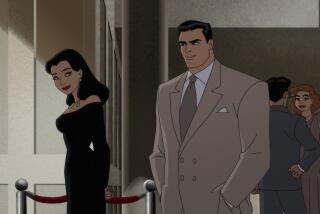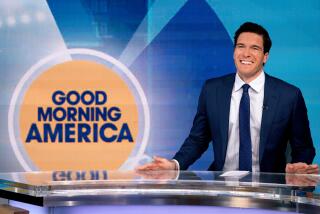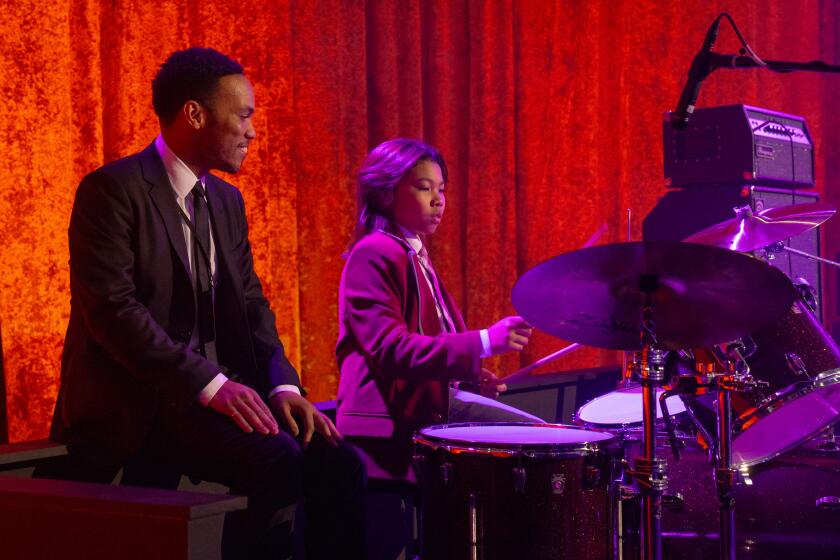Six lessons from ‘Man of Steel’s’ success
When it was first announced in early 2010, the idea of a new Superman movie prompted a mix of eye-rolling and excitement. On the one hand, didn’t we just do this in 2006? On the other, Christopher Nolan.
It’s fitting, then, that the movie it became, the Zack Snyder-directed “Man of Steel,” received the reaction it did this weekend: a somewhat tepid response from critics but widespread popularity among audiences, who came out to see it in massive numbers.
So what does it mean that one of the most beloved characters in the history of moviedom received this particular reception? A few nuggets worth contemplating about Superman redux, redux.
PHOTOS: 50 images from ‘Man of Steel’
Kneel before Zack. Snyder hadn’t had a mainstream hit in six years, a period of futility that included commercial misfires such as “Sucker Punch,” Legend of the Guardians: The Owls of Ga’Hoole” and “Watchmen.” That changed this weekend, as “Man of Steel” grossed $116.7 million between Friday and Sunday — a hefty chunk above the expected $95 million and the best-ever opening for a film in June (helped by a super-wide 4,207 screens). The movie also garnered the highest reviews among Snyder’s last three efforts, though at a 57% Rotten Tomatoes score it’s hardly anything to hang on the mantle. Still, it makes sense why Snyder is on board to make a sequel, the first time in his career he’ll revisit his own material.
The Godfather, Part II. It’s worked -- sometimes -- for Guillermo del Toro and J.J. Abrams. How much would godfathering a movie, that squishy process of setting it on its course and steering the director but not hanging out every day on set, work for Nolan? The popularity of “Man of Steel” this weekend proves that he’s got the gene too. Though it should be noted that fan affection and filmmaker involvement are correlated: “Man of Steel” didn’t generate nearly the same level or unanimity of fan excitement as the Batman series that Nolan personally stewarded (to wit, the Superman movie’s A-minus CinemaScore).
PHOTOS: Hollywood backlot moments
Expository powers. Many superhero franchises in recent memory have begun at the beginning -- that is, before or just as the hero is acquiring his superpowers. Snyder’s Superman goes in a bit of a different direction, showing his parental origins on Krypton but not his boyhood in Kansas as he learned his powers. Instead, we join Clark Kent as an adult as he’s already aware of what he can do. (Another exception to the no-midstream rule is “Watchmen,” also from Snyder.) Some critics questioned Snyder’s style of nonstop action. But the start-in-the-middle idea, for characters whose back story has been well-plowed, proved a success. Expect more where that came from.
Rebooting a reboot. “If at first you don’t succeed try, try again” is usually good advice for band auditions, not Hollywood properties. But lately it has, of course, been happening with the biggest movies, especially superhero ones. One example -- a take on the Hulk after it had been tried just five years before -- didn’t work. But last year “The Amazing Spider Man” restarted a franchise just five years after it appeared to end, generating big money and a sequel. “Man of Steel” is headed in a similar direction.
A different heavy metal. “Man of Steel” is a bona fide success and a much-needed new (sic) franchise for Warner Bros. But it’s not even close to the reigning champion of 2013. That title belongs to “Iron Man,” whose latest installment just hit $400 million in the U.S. and $1.2 billion globally, pretty much uncatchable numbers. Since that franchise started five years ago, its four movies featuring Robert Downey Jr.’s signature character have taken in a whopping $3.9 billion worldwide. Is it the novelty of “Iron Man,” which until 2008 we hadn’t seen before on the big screen? Downey’s unique performance? Something else? Either way, “Man of Steel” will have to content itself with second-place blockbusterdom.
PHOTOS: Billion-dollar movie club
British invasion. Henry Cavill was initially a gamble. Sure, after years of Brits playing villains, they’d successfully started incarnating our biggest superheroes — Christian Bale as Batman, Andrew Garfield as Spider-Man. But those actors were well-known to movie audiences before they ever whisked in to save an imperiled populace. Cavill had done little of profile in the U.S. -- his best-known part was in the modestly seen “Immortals.” He went yard here. Still, the question remains, did Cavill expand the reach of Superman or the other way around? After all, sometimes the cape can make the man.
ALSO:
Can ‘Man of Steel’ soar above $100 million?
‘Man of Steel’ posts biggest June opening ever
Zack Snyder tries his deconstruction of Superman
Follow me on Twitter at https://twitter.com/ZeitchikLAT
More to Read
Only good movies
Get the Indie Focus newsletter, Mark Olsen's weekly guide to the world of cinema.
You may occasionally receive promotional content from the Los Angeles Times.











